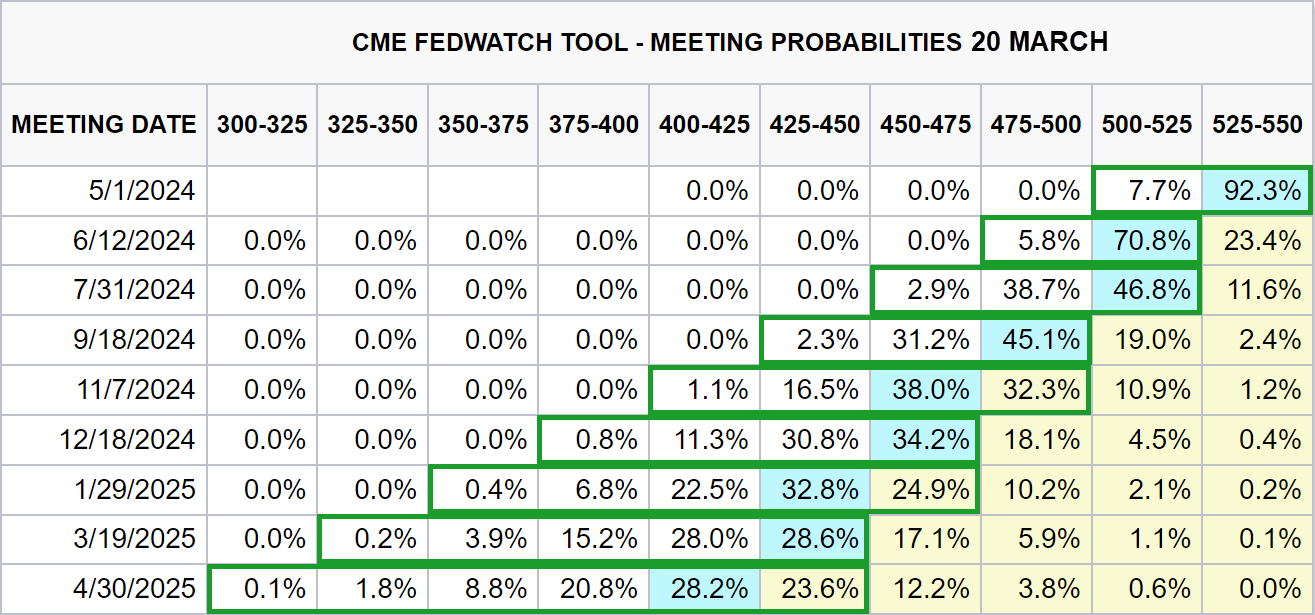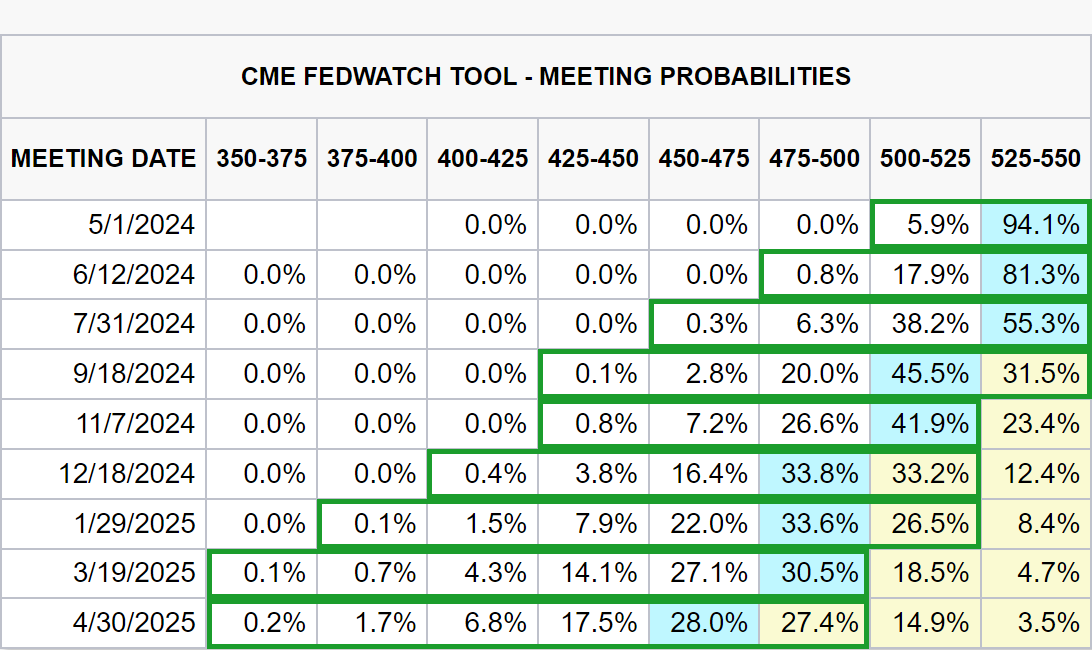US inflation data torpedoes June cut hopes. What’s the path of US interest rates now?
The market response to the US Federal Reserve’s March FOMC meeting was one of unbridled enthusiasm: stock markets around the globe soared to new record highs.
The Fed left rates on hold, but comments from Chairman Jerome Powell implied further rate hikes were now off the table, and “it will likely be appropriate to begin dialling back policy restraint at some point this year”. Even better, the Fed ratcheted up its forecast for US economic growth and employment, and at the same time, tempered its forecast on inflation.
The perfect Goldilocks scenario markets crave!
As a result of the March FOMC meeting, market pricing in the US interest rate futures market shifted to factor in a 76% probability the first interest rate cut would come by June.
Fast forward to yesterday’s release of the March consumer price index (CPI) data, which measures inflation on a basket of everyday consumer items, and market sentiment has shifted abruptly away from a June cut. Or a July cut for that matter. And potentially even, a September cut is now looking a little dicey!
What’s all the fuss about?
Well, the March CPI print of 0.4% in the “core” or underlying measure of consumer inflation was 0.1% worse than expected. This means that the annual rate of inflation over the last 12 months is 3.8%, the same as it was in February. It seems like only a small miss, but markets had hoped to see a continued decline in the inflation rate to provide the Federal Reserve with greater confidence that the inflation trend remains down.
The notion that “the inflation battle is being won” is slightly more opaque after yesterday’s data. As a result, the reaction from the stock market was the opposite of the reaction after the March FOMC meeting. Stocks fell across the board, with the Dow Jones Industrial Average, the S&P500, and the Nasdaq Composite each down around 1%.
Quite simply, stocks love lower interest rates. It increases their profitability, and it supports higher valuations by investors for their stock prices.
Bull markets are powered by lower interest rates, or at least the prospect of them. So, now that the market is facing the prospect of interest rates remaining higher for longer, we could experience some severe turbulence while investors adjust their expectations.
What’s the future path of US interest rates now?

The table above shows the expected path of US interest rates for the next 12 months as it was immediately after the March FOMC meeting held on March 20. Each green box represents a combination of probabilities that add to greater than a 75% chance of the interest rate being at the rightmost level of the box or lower at a certain future FOMC meeting.
For example, the first green box with greater than a 75% probability of a rate level less than the current 5.25%-5.50% was June with 76.6%. Using this method, these were the expected rate cut timings on March 20 assuming a probability of 75% or greater:
🔎 First cut = June @ 76.6% or July @ 88.4%
🔎 Second cut = September @ 78.6% or November @ 87.9%
🔎 Third cut = December @ 77.1% or January @ 87.4%
🔎 Fourth cut = March 2025 @ 75.9% or April @ 83.3%

So, after the March CPI data, where are we now? Using the same 75% confidence level, current market pricing shows a dramatic shift in thinking about the timing and frequency of Fed cuts this year.
🔎 First cut = November @ 76.5% or December @ 87.6% or January @ 91.6%
🔎 Second cut = March 2025 @ 76.8% or April @ 81.6%
June is out. July is out. Even September is out! The first cut is now slated for November, and only one more cut in March 2025 is expected within the 12-month look-forward period.
Now, keep in mind that I’ve chosen to use a 75% confidence level to delineate when a cut is more likely to occur than not – it just feels right to me. I know how fickle the market can be, and therefore I wouldn’t accept anything less!
You might prefer two-thirds, or 50%, or perhaps you’re an even greater cynic than I am and want to go with a higher confidence level like 90%. If this is the case, the timings and frequency of rate cuts will change. One thing you can be certain of, however, is that they’re going to change anyway. Investors are always assimilating new information and adjusting their expectations accordingly.
The other thing you can be sure of, is markets are going to continue to move based upon the timing and frequency of expected rate cuts for the foreseeable future. It’s the single most important thing on the market’s mind. For this reason, I’ll be keeping a close eye on the shifting rate cut probabilities and will update you if I see anything alarming!
This article first appeared on Market Index on Thursday 11 April 2024.
5 topics

